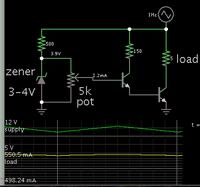Boosted67
Junior Member level 1

- Joined
- Apr 30, 2014
- Messages
- 16
- Helped
- 0
- Reputation
- 0
- Reaction score
- 0
- Trophy points
- 1
- Activity points
- 175
I know voltage isn't amperage, but I have either a 12v or 5v source to choose from. This will be feeding a varying solenoid. The position I'd like it in will require 850 milliamps(say the instructions.) Since this isn't a simple voltage reduction I was wondering if you guys had any input. It would be even better if I could vary the amperage, just incase I need the adjustment to get the solenoid right where I want it. Thanx for any direction in advance


